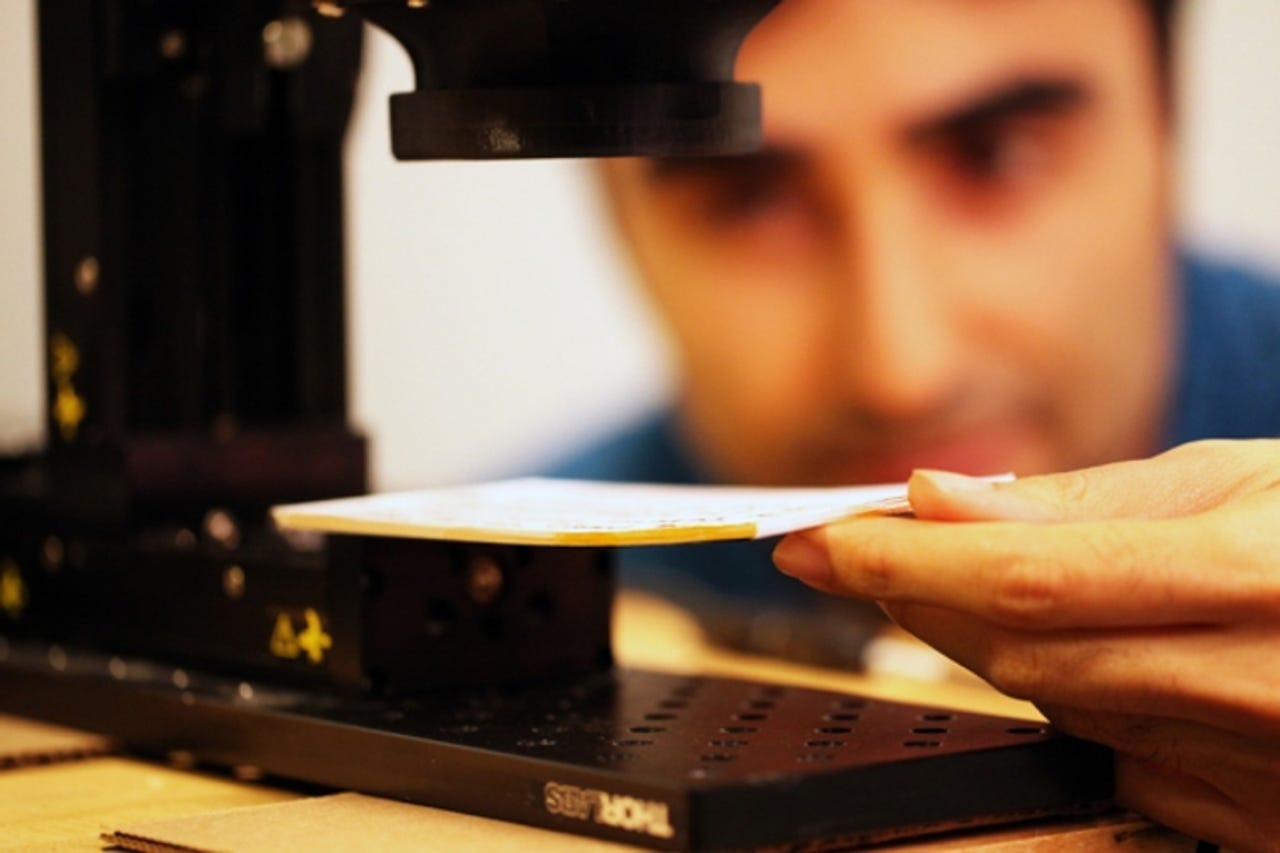New MIT camera will let you read a book without even opening it


The technology could be used to view ancient texts that are too fragile to touch, or for analyzing any layered materials.
Researchers at MIT and Georgia Tech have developed an imaging system that can identify letters on the first nine pages of a book without opening it.
As a result, scanning a book in future may not necessitate physically leafing through it. The new technique is possible thanks to the emerging field of terahertz radiation, the same technology that's being explored to detect explosives in security scanning systems.
However, rather than scanning for bombs, the MIT and Georgia Tech researchers have used terahertz radiation to extract letters from the pages of a closed book. The technique could, for example, be useful to unlock the contents of antique books that would be damaged by opening them.
The inspiration for the research was an MIT project that showed terahertz waves could be used to look through a closed envelope. But that system was limited to seeing through a single layer of paper, whereas this new system first needs to see the difference between multiple layers before detecting ink text and then recognising characters.
The system takes advantage of tiny air pockets between pages, which are exposed to a series of ultrashort pulses of radiation from a terahertz camera. By measuring the time it takes for the pulses to bounce back from the pages, the researchers can distinguish between individual folios.
"If you have the time resolution of the terahertz spectrometer, now you can actually look deeper into multiple pages," said Barmak Heshmat, a research scientist at the MIT Media Lab and one of the authors of the new paper, entitled 'Terahertz time-gated spectral imaging for content extraction through layered structures'.
MIT notes that while using X-rays provides the ability to see through surfaces, terahertz radiation can uniquely distinguish between paper and ink. It also produces better depth resolution than ultrasound.
The system is aided by one algorithm developed by MIT that acquires images from sheets of paper, and another from Georgia Tech that is used to recognize distorted or obscured characters. According to Heshmat, the letter interpreter is "kind of scary" due to its capacity to beat CAPTCHA systems.
The MIT algorithm is used to filter out the noise of the pulse after it's returned from the pages.
However, the test they conducted wasn't on an actual book. Instead, they successfully extracted letters from nine stacked cards.
According to Heshmat, New York's Metropolitan Museum is keen on the technology to view antique books that are too fragile to touch. The technique could also be used to analyze any layered materials, such as coatings on machine parts or pharmaceuticals.
MORE ON MIT RESEARCH
- Microsoft's, MIT's gold tattoos turn your skin into a UI for your phone
- MIT's artificial intelligence passes key Turing test
- Wi-Fi speeds could triple and range double thanks to MIT breakthrough
- MIT creates mobile phones which assemble themselves
- MIT creates video you can prod - it even lets Pokemon realistically bounce off bushes
- TechRepublic: New lithium metal batteries could double the life of smartphones, electric cars, and drones
- CNET: Cinema 3D with no glasses? MIT has done it